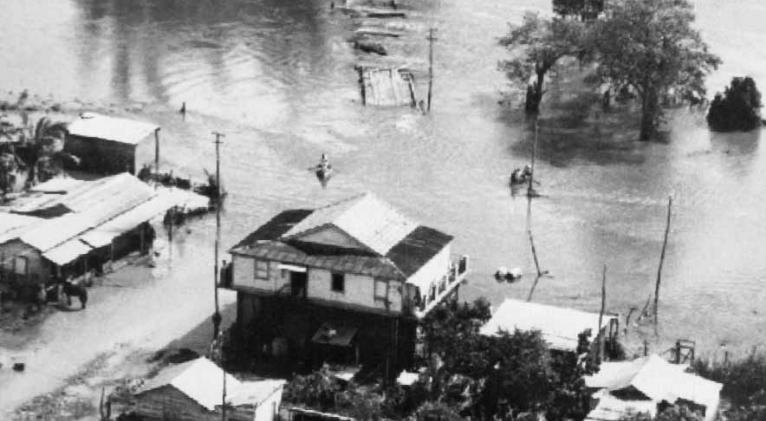
HAVANA, Cuba, Oct 4 (ACN) On October 4, 1963, Hurricane Flora made landfall in eastern Cuba with sustained winds of 160 km/h and extreme rainfall amounts that pounded the 63,000 square kilometers of the region for five days, recalled Professor Luis Enrique Ramos Guadalupe, coordinator of the History Commission of the Meteorological Society of Cuba.
“Flora, which brought the death toll to 1,600 and forced the evacuation of 175,000 people, caused one billion dollars in losses,” he added. “It reached Cuba as a category 2 hurricane with winds of 165 km/h; eventually it crept into the Caribbean, but then it turned northeast, made landfall again in the province of Camagüey, and meandered over the region for two days before it went back into the sea.”
He pointed out that the amount of rainfall marked an all-time yearly average of 1,600 mm, to the point that the waters of the Cauto River overflowed to 20 kilometers beyond its banks, flooding everything in its path.
“The onsite rescue operations were planned in real time under the guidance of the Commander in Chief, Fidel Castro Ruz, who led the process with his unique strategic qualities, sharing the danger with everyone else for more than 72 hours,” he remarked. “The Revolutionary Armed Forces were also engaged, making the most of the experience gained by the people in large mobilizations such as those of Bay of Pigs and the October Crisis. The crews of tanks, amphibious vehicles and helicopters, made up of young people with more revolutionary ardor than skills, wrote countless chapters of courage to save the lives of thousands of compatriots scattered on rooftops in flooded areas. (…) Never before were more people and resources mobilized to deal with a weather event.”
In the aftermath, the expert stressed, Fidel's thinking focused on the future to take advantage of the lessons learned and promoted the creation of an integral national system to protect the population and the economy, named Civil Defense, in charge of reviewing the protocols until then designed to protect Cuba from an armed aggression in order to cover natural disasters as well.
“Hurricane Flora was the catalyst of a social and economic process conducive to the integration of environmental and water management with a view to national security and self-sufficiency in times of crisis,” he added. “The success of such decisions in terms of disaster prevention and management was immediately noticeable in the drastic drop in the number of victims of extreme weather events.”
A comparison between the estimated 1,160 deaths caused by Flora and the 106 recorded in the 17 strongest hurricanes that hit Cuba between 1964 and 2023 reveals that the latter represent 9.13% of those reported during the passage of Flora.
Sidebar

 Agencia Cubana de Noticias
Líder en información nacional
Agencia Cubana de Noticias
Líder en información nacional








Nos reservamos el derecho de no publicar los comentario que incumplan con las normas de este sitio